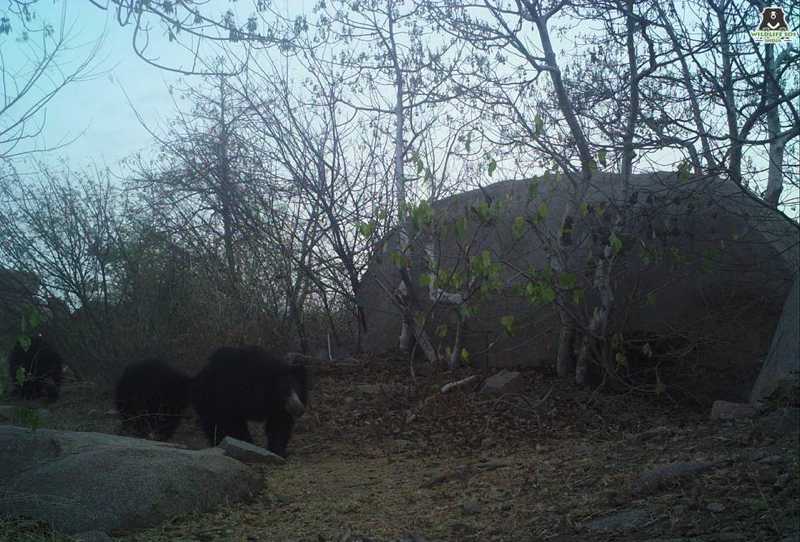Sloth bears are endemic to the Indian subcontinent and occur commonly across the tropical forests of the region. But over the years, the species population has experienced a declining trend. Exposed to severe threats like poaching and retaliatory killing as a result of man-animal conflict situations, the population figures are waning. Additionally, loss of habitat and fragmented forest cover has further shrunk their once vast-extending range.
The species is listed as ‘Vulnerable’ in the IUCN Red List and there is a need for extensive conservation efforts to ensure their sustenance in the wild. Wildlife SOS and its partner organizations- Hogle Zoo and Bear TAG – undertook a first of its kind research initiative to conserve the unique, indigenous species of sloth bears in India. By studying the denning pattern and ecology of the wild sloth bears in their natural habitat, we can further understand their physiology and natural behavioral patterns. This marks a major step forward for wildlife veterinary studies.
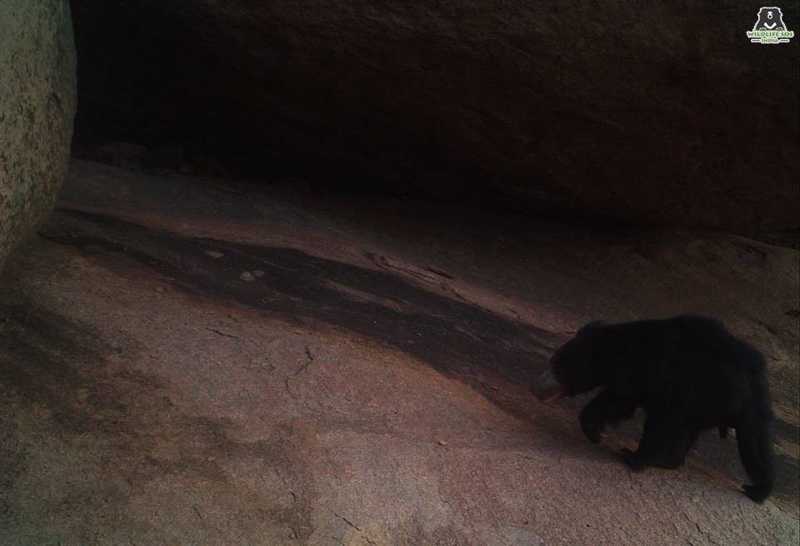
The Wildlife SOS team based out of the Bannerghatta Bear Rescue Centre first initiated the project in 2014. Spanning across regions like Tumkur, Ramnagara, Daroji and Gudekote forest divisions in the state of Karnataka, the team has since successfully expanded areas of study to cover Ramdurga, Bellary and Arsikere divisions. The research, being led by Wildlife SOS Director-Wildlife Veterinary Operations, Dr. Arun. A. Shah, Senior Biologist Mr. Swaminathan and US-based wildlife biologist and IUCN Sloth Bear Expert Mr. Thomas Sharp, aims at understanding the biology, denning patterns and reproductive physiology of sloth bears using advanced scientific techniques.
With the help of camera traps, our team has been able to closely map the movement and monitor the behavior of these bears. The study so far has shown great potential. We have had the opportunity to collect data and monitor several wild sloth bears, as well as to analyze other wildlife species in the areas with the help of camera traps.
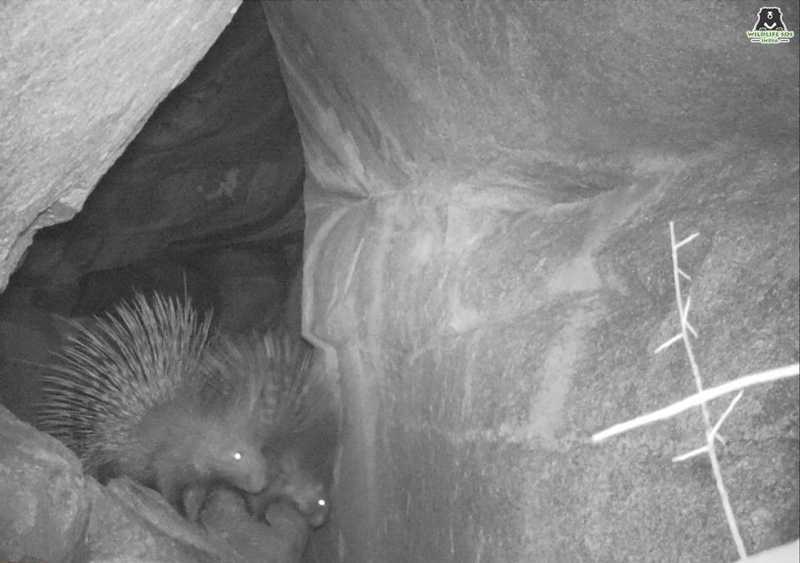
Through our research we have observed that the sloth bear population is very much isolated in terms of ecology. The existing bear habitat is highly fragmented and degraded in addition to being interspersed with human habitat. Furthermore, due to constant human interference, there have been changes in their behavior and they are developing a more aggressive nature.
We have identified over 500 resting dens and 42 maternal dens that were used by female bears to birth and nurture their cubs, across the six project areas in the Deccan Plateau. To our surprise, a majority of the maternal dens are close to human habitat. Though it was well known that sloth bears can give birth to up to three cubs, there was no recorded evidence or documentation of the same. In a first, during our denning study we witnessed three sloth bear cubs along with their mother in five different locations. The camera trap videos report the use of chemical communication techniques by the male bears in order to mark the den sites. These include pede-marking, defecation, urination and rubbing or scratching against trees.
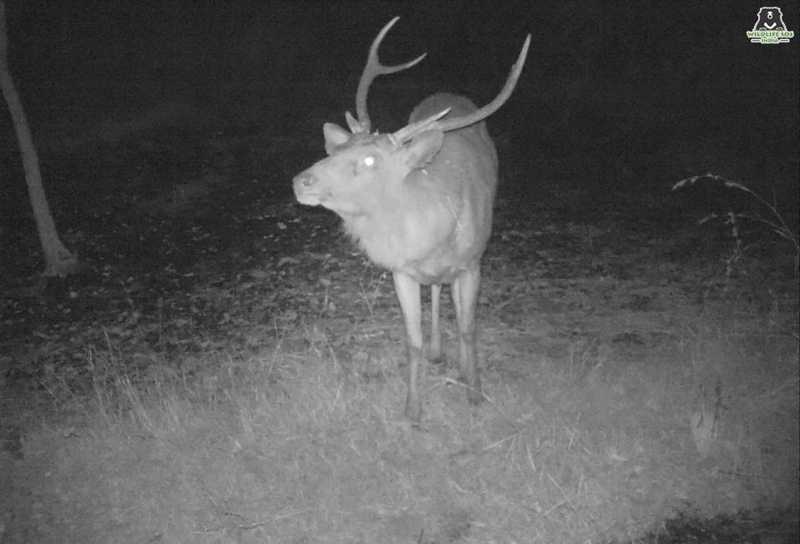
Of all the eight bear species in the world, the sloth bear is the least researched. Therefore, this serves as an opportunity to encourage scientific research that furthers international and national conservation efforts. It not only helps unravel some of the mysteries centered around the species but also gives insights on the other species sharing the territory. In the course of the project, the team was able to discover details about other species with overlapping territories. Sloth bears are often sighted to share caves or dens with porcupines, rusty-spotted cats (the world’s smallest cat species), jungle cats, mongoose, wild boar, snake species, monitor lizards and in some cases, even leopards.
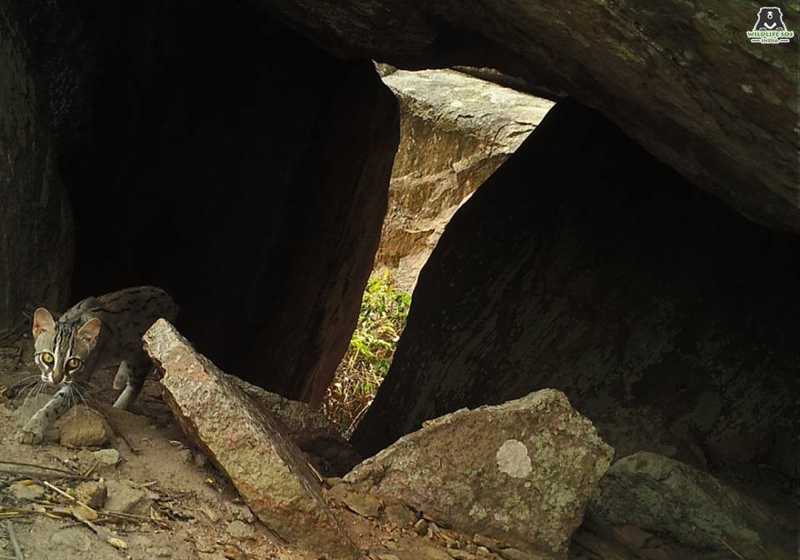
The urgent problem of the increasing number of man-animal conflict situations is also being addressed with the advancement of such a unique initiative. Wildlife SOS is not only home to the rescued dancing bears, but is also home to some of the victims of man-animal conflict situations. Therefore, in addition to the extensive research on the species of sloth bears, the team also engages in educating and apprising the local communities about the conservation ethics and measures to be undertaken to mitigate such encounters. This tackles the dual problem of habitat fragmentation as well as consequent adaptive functions by the species.
